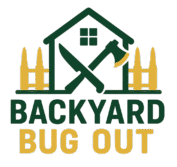When something goes wrong, you don’t have to panic — you just have to be ready. A few minutes of preparation now can save you hours of pain later. Building a backyard first aid kit gives you peace of mind and the ability to handle everyday injuries, small emergencies, or even full-blown survival situations right at home.
If you’ve ever grabbed a bandage, rinsed a cut, or treated a bug bite in the yard, you’re already halfway there. Let’s turn that basic know-how into a real survival medical kit that fits your lifestyle — simple, practical, and built from the ground up.
🩹 Step 1: Gather the Everyday Essentials
Start with the basics — the things that keep small issues from turning into big ones.
Core first-aid supplies:
- Gauze pads and assorted bandages
- Antiseptic wipes or povidone-iodine
- Adhesive tape and small scissors
- Tweezers, safety pins, and nitrile gloves
- Elastic wrap for sprains
- Instant cold pack and pain-relief cream
- Mini flashlight or headlamp
Keep everything dry, labeled, and easy to grab. In a crisis, organization beats chaos every time.
🌿 Step 2: Blend in a Little Backyard Medicine
A true prepper kit doesn’t stop at store-bought supplies. Add a few natural remedies — your own backyard medicine — to make it more complete.
Smart herbal add-ons:
- Plantain salve: calms bites and stings
- Aloe vera gel: cools burns and scrapes
- Yarrow powder: helps slow bleeding
- Lavender oil: reduces stress and disinfects cuts
- Activated charcoal: good for upset stomachs or mild detox
Pairing these with traditional gear gives you flexibility when shelves go empty.
💊 Step 3: Stock Simple Medications
Even the best natural kit needs a few pharmacy-grade backups. Add:
- Pain relievers (ibuprofen, acetaminophen)
- Antihistamines for allergies
- Electrolyte or rehydration packets
- Antibiotic ointment
- Antacids and motion-sickness tablets
- Eye rinse or saline solution
If you rely on prescriptions, keep a small reserve labeled and waterproofed.
🔪 Step 4: Don’t Forget the Tools
A good prepper first aid setup includes gear that helps you act fast.
- Multi-tool or pocketknife
- Trauma shears and tourniquet
- CPR mask
- Emergency blanket
- Waterproof lighter or matches
These turn your kit into a true backyard survival station.
🧰 Step 5: Maintain and Store It
Your kit isn’t “set and forget.” Check it every few months for expired meds or moisture. Keep one full kit at home and a smaller version in your vehicle or go-bag. Use waterproof cases and label them clearly — “First Aid / Medical.”
🧠 Final Prepper Tip
Practicing backyard first aid before an emergency builds muscle memory and confidence. Set aside one afternoon a season to refresh your skills—re-stock the kit, run a quick wound-care drill, and teach your family how to find and use supplies. Preparation doesn’t just save lives—it keeps panic out of the equation.
📚 Recommended Reading
- Preppers Medical Handbook — William W. Forgey MD
- The Survival Medicine Handbook — Dr. Joseph & Amy Alton
- Where There Is No Doctor — David Werner
- Herbal First Aid and Health Care — Charles W. Kane
These blend modern first aid with herbal wisdom — exactly what Backyard Bug Out is about.
🔗 Helpful Links
Internal:
- Backyard Medicine: 10 Survival Uses for Common Plants
- 10 Forgotten Prepper Items You’ll Need to Survive
- Power Outage Survival Guide
External:
⚠️ Disclaimer
This article is for educational purposes only and is not medical advice. Always consult a licensed healthcare professional before using any medical or herbal treatment. Some herbs may interact with medications or cause allergic reactions. Backyard Bug Out is not responsible for injury, misuse, or adverse effects resulting from application of the information above.
